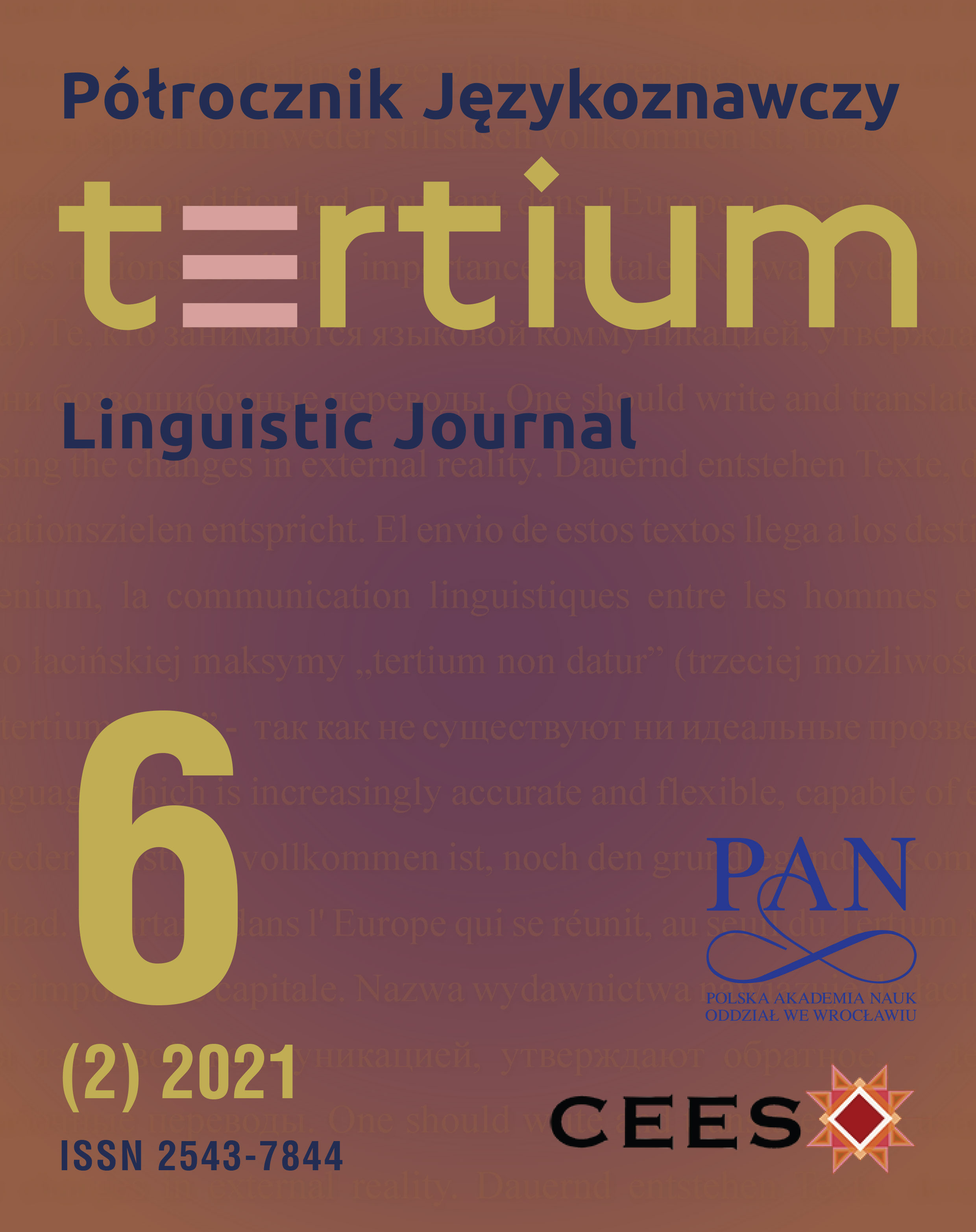Translating Semiotic “Polyphony” of Texts as a Culture-Formative Creation.
Translating Semiotic “Polyphony” of Texts as a Culture-Formative Creation.
Based on the Example of Bulgakov’s The Master and Margarita
Author(s): Caterina SquillaceSubject(s): Language and Literature Studies, Semiotics / Semiology, Theoretical Linguistics, Applied Linguistics, Semantics, Pragmatics, Translation Studies
Published by: Krakowskie Towarzystwo Popularyzowania Wiedzy o Komunikacji Językowej Tertium
Keywords: Bulgakov; polyphony; semiotics; text-structure; translation;
Summary/Abstract: The Master and Margarita is generally considered Mikhail Bulgakov’s literary masterpiece. It is a “melting pot” of literary genres, motives, themes, imagery and intertextual references. All these elements cooperate in creating a “polyphonic” novel, in Bakhtin’s sense of the word, not only when it comes to the different nature and “voice” of single characters but also with reference to the “poly-structured” construction of the text itself. The paper will illustrate the peculiarity of Bulgakov’s novel and the semiotic and semiosic character of his creation. The adjective “semiosic” derives from “semiosis” as defined, among others, by C.S. Peirce, who stresses the meaning-making “power” of some semiotic processes. The paper aims also at answering the question why this novel has been translated several times into Polish and Italian since 1967 (when the first edition of the novel was published in Western Europe). Due to the very specific construction of the plot and of the formal aspects of the novel, translators had to deal with a significant number of problems of “untranslatability” that they could solve only by using their creative potential. It was Roman Jakobson who through his linguistic analysis reached the conclusion that for the untranslatable—poetry for example—“Only creative transposition is possible”. Using creativity translators were also able to discover further interpretations of Bulgakov’s literary work and to perform a culture-formative act as their efforts offer new points of view on reality and its perception, wider knowledge of the social life not only in Soviet times but in a more universal perspective as well as new models of text and literariness. That’s why a novel like Bulgakov’s masterpiece has been translated so many times and it is still translated in the two languages selected for the purposes of this research and all over the world. And this is also the reason why it can be considered a meaning-generative and culture-formative text even if its first edition appeared in 1940.
Journal: Półrocznik Językoznawczy Tertium
- Issue Year: 6/2021
- Issue No: 2
- Page Range: 158-169
- Page Count: 12
- Language: English

